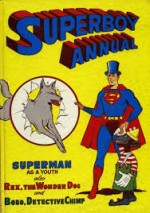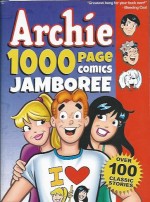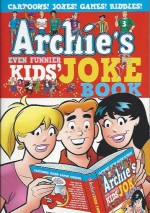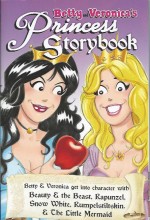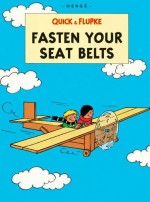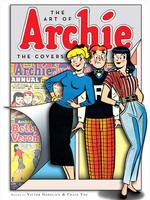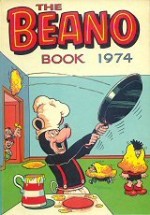
By various (DC Thomson & Co., Ltd.)
Retroactively awarded ISBN: 978-0-85116-077-1
For many British readers – whether comics fans or not – fans, the Holiday Season can only mean The Beano Book, so I’ve once more highlighted another of the venerable, beloved tomes as particularly representative of the time of year.
Way back when, many annuals were produced in a wonderful “half-colour†which British publishers used to keep costs down. This was done by printing sections or “Signatures†of the books with only two plates, such as Cyan (Blue) and Magenta (Red) or Yellow and Black.
The sheer versatility and colour range provided was simply astounding. Even now this technique inescapably screams “Holiday Extras†for me and my aging contemporaries and none more than in this spectacular example which would have hit shop shelves in September of 1963.
As is so often the case, my knowledge of the creators involved is appallingly sub-standard, but I’ll hazard my usual wild guesses in the hope that someone with more substantial information will correct me when I err …
This anarchically rousing compilation kicks off with a double-page splash of ‘Peculiar Pets’ Picture Gallery’ (by Robert Nixon, I think) displaying a number of comics stars and their companion animals of choice, after which Minnie the Minx (Jim Petrie) and a few chums and latterly Biffo the Bear with human pal Buster (by David Sutherland) introduce this year’s annual before Ron Spencer’s Baby-Face Finlayson (“The Cutest Bandit in the Westâ€) imagines life as a giant and not a pipsqueak…
“Fastest Boy on Earth†Billy Whizz (drawn superbly as ever by Malcolm Judge) then learns to respect the power of traffic signs – in his house – before the crafty campaigns of ‘The Nibblers’ (John Sherwood) wins them a grand Christmas nosh-up and sanctuary from the seasonal snows.
Back then The Beano still had the odd adventure strip and perhaps the greatest of these was boy superhero Billy the Cat. Sutherland next proves his astounding visual versatility in The Bash Street Kids where the pupils plump for pop and resist the calming charms of classical music – leading to a camera-shattering pinup of ugly mug Plug – before switching to action mode as the acrobatic champion – now teamed with his cousin as Billie the Cat and Katie – jointly recapture an escaped convict and preserve their secret identities from curious school chums in a splendid rollercoaster romp.
Petrie’s Minnie the Minx then painfully learns that she’s not cut out for pony riding, after which Nixon panoramically maps out ‘A Funny Look at “Beano-Town‑ whilst Bob McGrath details the sub-zero antics of The Three Bears as they try to find fuel to heat their chilly cave.
Also ably illustrated by the tireless Sutherland, Biffo and Buster return as rivals clashing in a man-powered flight competition, after his Pin-up Pup! of Dennis the Menace’s perilous pooch Gnasher leads into a custard-coloured clash between his master and simpering swot Walter.
Spencer’s Little Plum experiences a mysterious clean-up whilst sleepwalking before Nixon’s Lord Snooty and his snowballing pals at Bunkerton Castle get some startling help from the estate’s star stag Angus even as elsewhere – and keeping up the Hibernian humour – Haggis hunters The McTickles (by Vic Neill?) fall foul of their canny shaggy prey…
Pup Parade starring the Bash Street Pups (Gordon Bell) finds the mini-mutts (eventually) enjoying an old dinosaur bone before a dedicated and extended niche chapter from Nixon. Here in an expansive section of his own, Roger the Dodger’s Special Mini-Book offers the rollicking tale of the ‘Disappearing Dodger’, a pin-up, his hilarious, historically inaccurate ‘Family Tree’, ‘A Dodger’s Outfit’, and an informative peek at ‘A Dodger’s Den’ before closing with the final pin-up ‘Dreaming of Dodges’…
Biffo’s back – and points south – endure a battering due to the bear’s interest in buttercups (Sutherland) before Nixon reveals how the obstreperous Grandpa still catastrophically refuses to act his age and The Nibblers (Sherwood) again overcome malicious moggy Whiskers to fill their bellies with purloined goodies.
The riddle of Billy Whizz’ footwear replacement is solved in a quick-fire yarn by Judge before Bell’s Pup Parade starring the Bash Street Pups tale discloses the secret of their unlikely alliance with a very big cat…
Heading out West, The Three Bears (McGrath) find – and lose – a mountain of gold, The McTickles lose a skirmish with the wily Stilt-legged McHaggises, and Baby-Face Finlayson rewrites a few favourite nursery rhymes before Teacher and even Head have another go at civilising the Bash Street Kids with music – appended with a stomach-churning pin-up of Cuthbert Cringeworthy in Teacher’s Pet’s Picture Gallery…
Ron Spencer stretches his artistic muscles providing ghastly genealogical ‘Fun with the Finlayson Family’ and illustrating how Little Plum gets into big trouble trying to recapture girlfriend Little Peach‘s pet parrot, before Billy the Cat and Katie swing back into action, turning on the town’s Christmas lights and tracking down a hold-up gang (Sutherland).
Another gloriously funny Lord Snooty strip from Robert Nixon segues into Minnie the Minx’s hilarious crush on an American boy-band – and older readers will cringe with mirth at Jim Petrie’s hilarious spoof of then-sensation Donny Osmond – before Nixon strikes back with a Grandpa yarn involving the old codger’s inability to stay clean…
Beano star Dennis the Menace was only slightly involved in the Annuals of this period as he had his own Christmas Bumper book to run riot in, but he closes this tumultuous tome with an funny educational strip that’s a thinly disguised advert for his solo venture before the merriment closes here with another superb dose of Nixon’s ‘Peculiar Pets’ Picture Gallery’ …
This is supremely entertaining book, and even without legendary contributors Dudley Watkins, Leo Baxendale and Ken Reid there’s still an abundance of satisfyingly madcap, infectious insanity. With so much merriment on offer I can’t believe this 40-year old book is still sprightlier and more entertaining than most of my surviving friends and relatives. If ever anything needed to be issued as commemorative collections it’s these fabulous DC Thomson annuals…
Divorcing the sheer quality of this brilliant book from nostalgia may be a healthy exercise – perhaps impossible, but I’m quite happy to luxuriously wallow in the potent emotions this annual still stirs. It’s a fabulous laugh-and-thrill-packed read from a magical time, and turning those stiffened two-colour pages is always an unmatchable Christmas experience, happily still relatively easy to find these days.
© 1973 DC Thomson & Co., Ltd.


